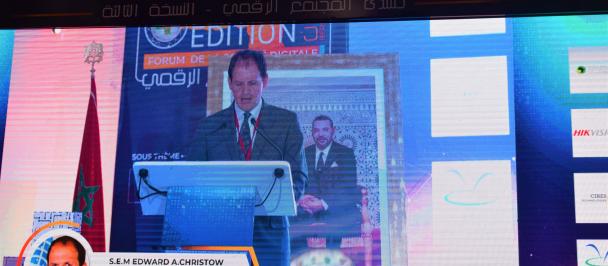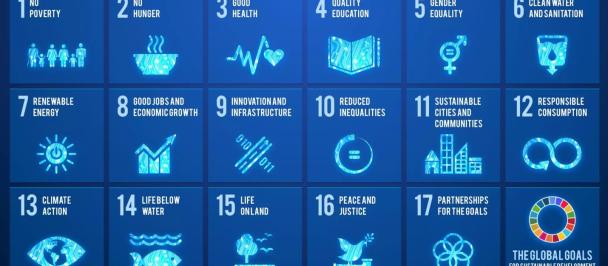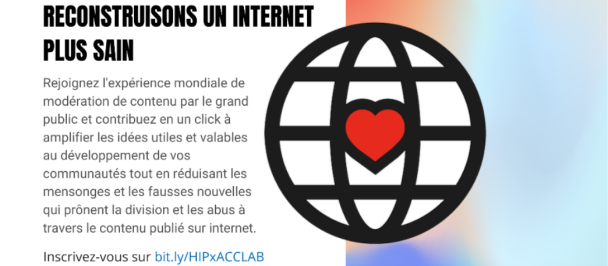How to Land the Future of SDG-anchored Digital Finance in Developing Countries
13 septembre 2022

By Aiaze Mitha, UNDP/UNCDF Global Lead, Digital Finance and the SDGs
& Najoua Soudi, Head of Solutions Mapping UNDP in Morocco Accelerator Lab
DIGITALIZATION IS TRANSFORMING FINANCE
Digitalization is transforming our lives and is reorganizing finance. Over the last decade, the long wave of digitalization has disrupted our lives and restructured finance across developed and emerging markets.
Digitalization is transforming finance. It enables financial services to be automated, commoditized and customized. Mobile money is bringing financial services to new mass markets. A daily market trader can borrow small amounts at sunrise to buy her stock and repay her debt at sunset from her daily earnings. Fintech [financial technology] companies known as neobanks, have been creating disruptive -digital-first and often digital only- value propositions since decades in the form of digital banking platforms– designing seamless online experiences, low- or no-fee services and serving previously underserved communities. New “fintech” companies, existing financial service providers and ecommerce platforms are all part of the disruptive wave. We believe that digital finance has been driving financial inclusion for the most vulnerable groups of people with 1.35 billion registered accounts in 2021. Through more, better, cheaper, faster data - which has enhanced the use of environmental data and impacted the consideration of climate change - it has also enabled innovative business models such as alternative lending for SMEs and farmers, parametric insurance and embedded finance on e-commerce platforms; notwithstanding how digital finance unlocked access to expensive utilities such as clean solar energy, healthcare and education through cost-effective fractionalization of payments and pay-as-you go models.
In addition, the financial sector is reconfiguring and reorganizing itself around specific roles and functions (distribution, customer relationship, product, balance sheet) opening the door to new partnerships and a shift toward a more embedded and modular financial sector. In the meantime, new trends such as digital currencies, smart contracts and decentralized finance (DeFi) are opening new frontiers and challenging the more traditional finance architecture through decentralization and automation. This is further exacerbated by the advent of Web3 services.
Digital Finance indeed has and continues to grow quickly — perhaps even quicker than we could have predicted five years ago. We see digital finance’s (aka Fintech, embedded finance, open banking, decentralized finance, central bank digital currencies) fast pace of development as an opportunity to advance the SDGs in ways previously unattainable. This rapid development also brings about an important consideration: Countries will need to combine a risk-conscious innovation culture with a higher risk appetite for digital finance for it to reach its full potential.
As we support Morocco to bring about an SDG-anchored digital finance local ecosystem, we will need to make sure that the many layers of interventions are risk-informed, future-smart and are able to meet the unprecedented shift in demand for new financial services and products. This means that policies, regulations and investments will need to take steps today to become more insight-driven, effectively orchestrated, reflexive, intertwined, and purposeful. Governments should take the lead in shaping digital finance innovations in support of their national development priorities and this is how UNDP and UNCDF are supporting them.
DIGITAL FINANCE IS ALREADY PLAYING A KEY ROLE IN FINANCNG THE SDGS
The good news is that digital finance is already accelerating the SDGs. Here are five ways digital finance is already reshaping finance around a sustainability agenda:
- In Bangladesh, domestic savings are mobilized to finance the SDGs.
- Also in Bangladesh digital wages help yield enormous dividends for women in low-income settings.
- In Zimbabwe, digital finance innovations are combined with capital market infrastructure to tackle the SME finance challenge.
- Payment for ecosystem services are becoming the norm for incentivizing and compensating companies and communities for environmental and social services and digital finance / Fintech will be crucial to its operationalization.
- New gig economy models are emerging that rely on digital finance and fintech solutions for new livelihood opportunity creation.
BUT THERE ARE BARRIERS
Risks and barriers in effective harnessing of digital finance are well known. Barriers include gaps in digital infrastructure, skills and policy enablement. In addition, digitalization can also lead to breaches of personal data, biases in algorithms, data monopolies, market concentration and cybersecurity issues, undermining its value.
DEVELOPING SUSTAINABLE DIGITAL FINANCE ECOSYSTEMS IS KEY
Evidence speaks volumes of the level of ambition required and the necessity of effective public-private partnerships is vital, as is the necessity to guarantee that digital finance become accessible to, are used by, and provide benefits for the most left behind.
According to the Global Findex 2021, approximately two-thirds of individuals in developing countries who received digital payments also stored money in their accounts for cash management, around 40% saved money in their accounts, and 40% borrowed money from their accounts. These results indicate that digital inflows may open the door for a greater usage of financial services, even though the data do not allow for the establishment of a causal link. This is especially true in nations where policies permit more interoperability between banks and mobile-money providers or where regulations provide mobile-money providers the freedom to safely offer new services under certain conditions.
Much of the developing countries’ ability to tap into digital finance potential to advance the SDGs will come down to their ability to quickly identify new catalytic innovations that can be scaled and mainstreamed as well as connect those innovations with policies, markets and digital ecosystems conductive of rapid adoption.
Going forward, developing sustainability aligned digital finance ecosystems will be more and more critical if we are to materialize the benefits offered by digital finance.
This will require:
- Governments to invest in digital infrastructure foundations: (i) required digital infrastructure combining connectivity, access and affordability, (ii) reliable, secure, private, unique digital IDs and (iii) data privacy solutions.
- Governments to enable digital finance ecosystems by promoting (i) assessments and stock taking of the level of development of digital finance ecosystems (SDFE); (ii) better understanding the contribution of digital finance for the financing of SDG priorities, (iii) incentivizing the development of SDG-aligned digital finance ecosystems, which involves accelerators, incubators and innovation hubs.
In this context, UNDP in Morocco Accelerator Lab is developing an SDG Digital Finance Learning Portfolio while supporting the Central Bank of Morocco. We support cross-industry ecosystems where we look at the digital finance as the on-ramp to financial inclusion and many other pathways to accelerating the SDG. These include, for instance, the energy transition and women resilience. We see that Central Banks are compelled to forever play catch up with new technologies and have a significant role to play in inspiring and developing innovations that can have material impact, and in exemplifying what is possible as the future of central banking relies on its dexterities with data in the economy and reflexive regulations.
Beyond the portfolio’s core learning quest to help close the digital divide while serving the underbanked (70% of Moroccan population does not have a mobile money or bank account) in new effective ways (e.g. open banking, fintech and others...) that the banking system couldn’t -up to now- come close to (designing pro-poor and last-mile services and products at reasonable costs). The learning portfolio action-research pathways to unlocking large scale digital finance innovations with catalytic SDG impacts. For instance, we designed a thought experiment on how delivering digital literacy micro-training with seamless tools can tilt the odds towards micro-saving and inclusive digital financial services adoption/usage.
As part of the same learning portfolio, UNDP Accelerator Lab together with the Central Bank of Morocco is conducting the SDG Digital Finance Ecosystem Assessment (SDFE). The country assessment helps better understand the drivers that make a country digitally ready, which in turn will help design the policy interventions and investments needed to fast-forward its digital journey whilst advancing the SDGs. Intended to link digital finance policies with financing of the SDGs, the assessment report is instrumental for Morocco’s Central Bank to propel digital finance, gender-sensitive Fintech, digital green bonds etc. The lab is working with the Joint UNDP/UNCDF TEAM and taking stock of the country digital economy and digital finance ecosystems to understand the current level of (digital) financial inclusion of underserved segments of the population, with a specific focus on women, in order to identify key drivers and catalytic investments within the digital economy that can be taken forward to fast-track the SDGs.
---
UNDP is building the world’s largest learning network around development challenges. 92 Labs in 115 countries. http://acceleratorlabs.undp.org/

 Locations
Locations


